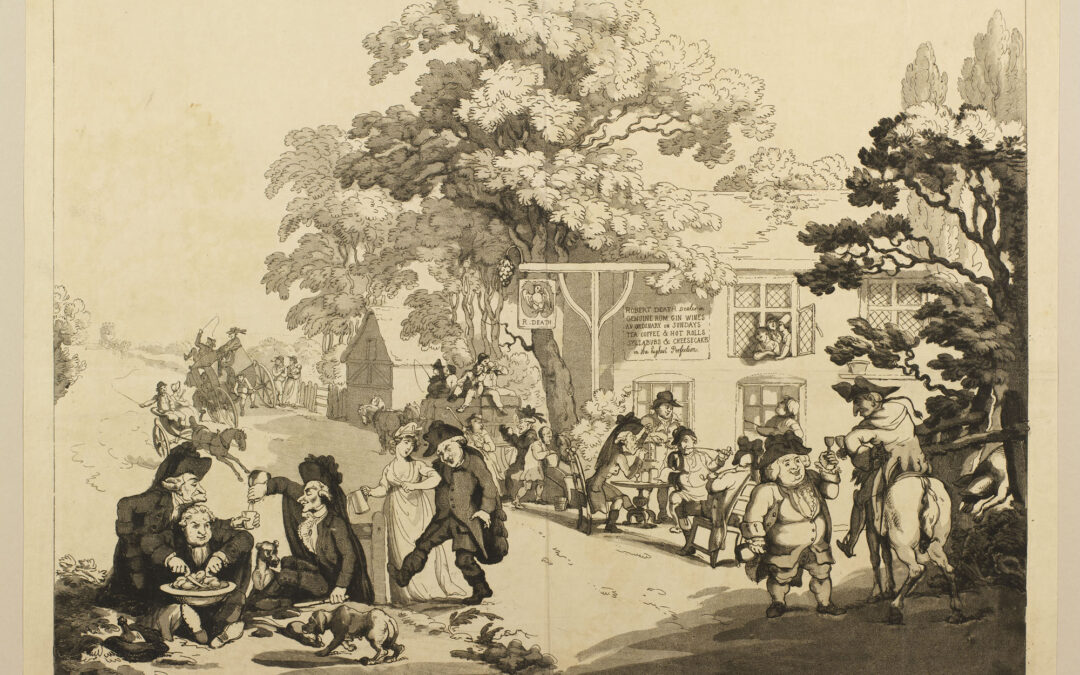Rowlandson’s Undertakers Regaling is a jibe at Robert Blair’s pious and maudlin “The Grave.”* Rowlandson does not mention Blair, but his audience would have recognized the allusion to his well-known and well-anthologized poem.
Appended to Rowlandson’s cartoon is an anonymous doggerel poem ending:
This advice my friends pursue
Whilst you have life and breath,
Ne’er pledge your host, for if you do,
You’ll surely—Drink to DEATH.
The inn’s sign reads Robert Death, dealer in Genuine Rum, Gin, Wines. An ordinary on Sundays. Tea, Coffee & Hot Rolls. Syllabubs & Cheesecake in the highest Perfection. Thomas Rowlandson. Undertakers Regaling (1801), London: Ackermann London,1801. Royal Collection Trust. [Syllabub is a drink of cream and wine served cold.] It is purported that Robert Death was the innkeeper of the Falcon Inn at the Clapham Junction, London. The inn is real; searches for Robert Death were unsuccessful.
Rowlandson often used visual picnic motifs, particularly savaging the Pic Nics, the London club dedicated to excess in feasting, drinking, and gambling. [Blowing up the Pic Nics (1802) posted elsewhere on PicnicWit.]
Featured Image: Undertakers picnic as if it’s their last meal.
See Thomas Rowlandson. Undertakers Regaling (1801), engraving on paper. The plate reads “John Nixon Esq delin / Rowlandson sculp / Pubd 15 January 1801 by R Ackermann 101 Strand.”
*Now forgotten, Robert Blair, a Scot, was an Anglican priest. “The Grave” (1743) preceded his Death indicates the premonition of his death. It was only one of three poems he published but was amazingly enduring and popular. Samuel Rawle’s Undertakers at Robert Death’s Inn (1801), a copy of Rowlandson’s Undertakers, replaces the doggerel with the quotation directly from Blair:
But see! The well plumed hearse comes nodding on,
Stately and slow; and properly attended
By the whole sable tribe that painful watch
The sick man’s door, and live upon the dead,
By letting out their persons by the hour,
To mimic sorrow when the hearts not sad.
*William Blake’s illustrations of “The Grave.” His watercolors (1805) are unpicnicky, severely reflecting Blair’s piety.

